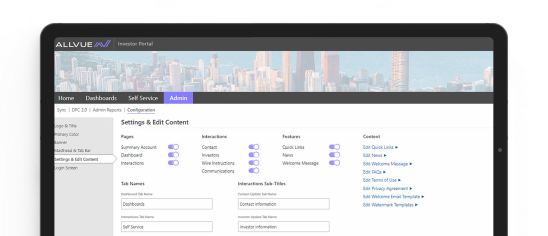
By: Megann Freston
Director of Product Marketing
April 26, 2024
Private equity (PE) deals usually include an agreement between a fund’s investors (limited partners) and its managers (general partners) on how to distribute investment profits.
The most common approach is to distribute proceeds using a hierarchical mechanism known as a “distribution waterfall,” of which there are two main types: American waterfall and European waterfall.
These two waterfalls have distinct implications for a fund’s stakeholders, particularly in terms of how and when they receive investment rewards. Therefore, it’s important to understand how they work as well as the pros and cons of each.
In this American vs. European waterfall review, we’ll tell you everything you need to know about the two models so you can decide which could be a better option for your fund.
Private equity distribution waterfalls: An overview
A distribution waterfall is a framework that describes the order in which investment proceeds are distributed between a private equity fund’s limited partners (LPs) and general partners (GPs). The central role of a waterfall is to align the interests of GPs and LPs by establishing clear rules for profit distribution.
The term is an analogy to how water flows down a waterfall into a series of pools or tiers located at different heights. The water fills up one pool at a time before overflowing into the next.
The distribution of returns in private equity funds follows a similar, tiered progression. Cash flows through several tiers in a predetermined order, moving on to the next tier only when the previous one is filled.
The type of distribution waterfall that a fund will use is usually specified beforehand in the limited partnership agreement (LPA).
What are the different tiers in a distribution waterfall?
Distribution waterfalls typically have four primary tiers.
- Return of Capital: In this tier, the LPs receive 100% of a fund’s distribution until they have fully recouped their initial investment.
- Preferred Return: Following the return of the initial investment, the LPs continue to receive 100% of the fund’s distributions up to their preferred return, or “hurdle rate.” This rate, which is set out in the LPA, represents the minimum expected return on investment. In most equity deals, it ranges between 7% and 9%.
- The Catch-Up (or Carried Interest): After the LPs receive their preferred return, the fund’s GPs now get a majority or all of the next set of distributions until they have received a specified percentage of profits. This is the “carried interest” and is usually about 20% of the fund’s cumulative profits.
- Splitting of Distributions: This is the final tier where the remaining distributions are split between the LPs and GPs according to a predefined ratio, often 80/20.
In the next section, we’ll discuss the two main types of distribution waterfalls — American and European — examining how each operates as well as their respective advantages and drawbacks.
The American waterfall model
The American waterfall is also known as the “deal-by-deal” waterfall because it distributes profits on a deal-by-deal basis.
Under this profit-sharing model, GPs receive carried interest before limited partners have completely recouped their initial investment. Not surprisingly, it’s the distribution mechanism that most GPs generally prefer since it enables them to receive compensation sooner. The model is also quite popular in venture capital partnerships.
A notable feature of deals structured under the American waterfall is the inclusion of a “clawback provision.”
If at the end of a private equity fund term, the GPs have received carried interest that exceeds the agreed-upon share of fund profits (usually 20%) or have received carried interest without the LPs realizing their preferred return, the clawback provision allows the LPs to reclaim part of the GPs carried interest to align the share of profits with the terms defined in the LPA.
Advantages of the American waterfall model
- Quick compensation for GPS: The American waterfall allows GPs to receive compensation early in the life of the fund, which can be crucial for smaller or emerging fund managers who depend on these earnings for operational stability and growth.
- Motivation to seek high-performance deals: The American waterfall method can motivate GPs to identify and execute high-performing deals, as their compensation is more directly tied to the success of individual deals. This can lead to higher overall fund performance, which benefits both LPs and GPs.
- Attracting talent: The prospect of earlier payouts makes funds using the American waterfall more attractive to top-tier management talent who desire to be rewarded for successful deals earlier.
Drawbacks of the American waterfall model
- Higher risk for LPs: LPs face greater risk under the American model, especially in volatile markets or if early deals underperform. There’s a possibility of GPs receiving a significant portion of carried interest before the LPs have fully recovered their capital and achieved their preferred return.
- Complexity of clawback provisions: While the clawback provisions are designed to protect LPs, they add complexity to the fund’s structure and can cause administrative challenges or even disputes.
- Focus on short-term gains: The early payout to GPs could potentially lead to a focus on short-term gains over sustainable, long-term fund growth.
The European waterfall model
The European waterfall is the more popular of the two profit-sharing models and is used by the majority of PE funds worldwide. In this model, GPs don’t get carried interest until after all LPs have recovered their capital contributions and attained their preferred return.
In other words, this model provides LPs with the lion’s share of early distributions, which makes it the preferred option among this category of partners.
Advantages of the European waterfall model
- Greater protection for LPs: GPs receive carried interest only after all LP capital contributions have been recovered and hurdle rates met. This ensures that LPs’ investments are prioritized, reducing their risk exposure.
- Simplification of profit distribution: The European model simplifies the profit distribution process, reducing the need for complex provisions like clawbacks. That makes funds easier to manage and understand for all parties involved.
- Higher returns: The European model motivates GPs to aim for higher returns to access the carried interest tier. This could lead to higher profits for the fund.
Drawbacks of the European waterfall model
- Delayed GP rewards: Under the European model, GPs typically have to wait longer to receive their share of profits. The delay can reduce their immediate incentive to drive growth. Alternatively, it can push them towards adopting higher-risk strategies to achieve the carried interest threshold sooner — strategies that might always yield positive outcomes.
- Less flexibility in profit allocation: The European waterfall provides less flexibility to reward exceptional performance on individual deals. Consequently, it might encourage the application of a generalized strategy that fails to leverage unique market opportunities that could actually benefit the fund in the long term.
American vs. European waterfall: Case study
To help you visualize how proceeds distributions occur under an American and a European waterfall, here’s an example.
Consider a private equity fund with a capital pool of $200 million. The fund invests in two different projects: Project A for $70 million in year one and Project B for $130 million in year two. The fund then exits each investment after five years. Project A is sold for $210 million, which means a profit of $140 million, while Project B is sold for $260 million ($130 million profit).
Let’s assume the fund has a carried interest rate of 20% and a hurdle rate of 8% per annum.
From this example, here’s how the distribution of funds to LPs and GPs might occur under the two distribution models.
American model
Project A
Stage 1: From the total proceeds ($210 million), $70 million is returned to LPs, which is the initial investment in this project.
Stage 2: The LPs then receive the hurdle rate for Project A ($32.85 million).
Stage 3: GPs then “catch up” by receiving carried interest of $8.21 million.
Stage 4: The remaining proceeds are then divided between the two parties on an 80/20 basis. So, from $99.21 million, LPs get $79.34 million, and GPs get $24.9 million.
Project B
Step 1: From the total proceeds ($260 million), $130 million is returned to LPs (the initial capital put into the project).
Step 2: LPs receive the hurdle rate for project B ($61.01 million).
Step 3: LPs get carried interest “catch-up” ($15.25 million).
Step 4: The remaining $53.74 is split 80/20, with LPs getting $42.99 million and GPs getting $10.74 million.
The European model
Project A
Step 1: From $210 million, $200 million is returned to LPs. This is the total capital put into the fund’s two projects.
Step 2: LPs receive part of their $93.86 million hurdle rate entitlement. They only get $10 million, which is the remaining amount from the sale proceeds of Project A.
At this point, all funds have been distributed to the LPs, so there’s no carried interest to give to the GPs.
Project B
Step 1: LPs receive $83.86 million to complete the hurdle rate of $93.86 million.
Step 2: GPs now get their carried interest “catchup,” equivalent to $23.46 million.
Step 4: The remaining amount, which is $152.68 million, is split 80/20 between the parties, with LPs getting $122.14 million and GPs getting $30.53 million.
From the example above, GPs end up receiving roughly the same amount of carried interest under both models. However, the American model allows them to access carried interest earlier. In the European model, they have to wait until all the LP’s capital contributions have been returned and their preferred returns are met.
Wrapping up: American vs. European waterfall
A distribution waterfall defines the way the GPs and LPs in a private equity fund receive the investment proceeds. As we’ve seen, these structures fall into two main categories: the American waterfall and the European waterfall.
Both models have their pros and cons. The American model, with its deal-by-deal approach, provides immediate incentives for GPs but places more risk on LPs. Conversely, the European model is more protective of LP interests, ensuring their capital and preferred returns are prioritized, but may delay GP compensation.
Whichever distribution waterfall you choose, having the right tools to execute it is of paramount importance. This is where Allvue Systems comes in.
With advanced automation capabilities, our Fund Accounting Software solution simplifies what is otherwise a complex and time-consuming process while also improving accuracy and transparency. By integrating our software into your operations, you can streamline your private fund’s profit distribution and ensure that all parties, including GPs and LPs, are satisfied.
Schedule a free demo today to learn more.
Sources
Goodwin Law: Half of private investment funds set hurdle rates at 8% but rates differ by asset class and strategy. https://www.goodwinlaw.com/en/insights/publications/2023/11/insights-otherindustries-pif-half-of-private-investment-funds-set-hurdle-rates
Yieldstreet: Carried Interest: What it is and how it works. https://www.yieldstreet.com/blog/article/carried-interest-explained/
More About The Author

Megann Freston
Director of Product Marketing


